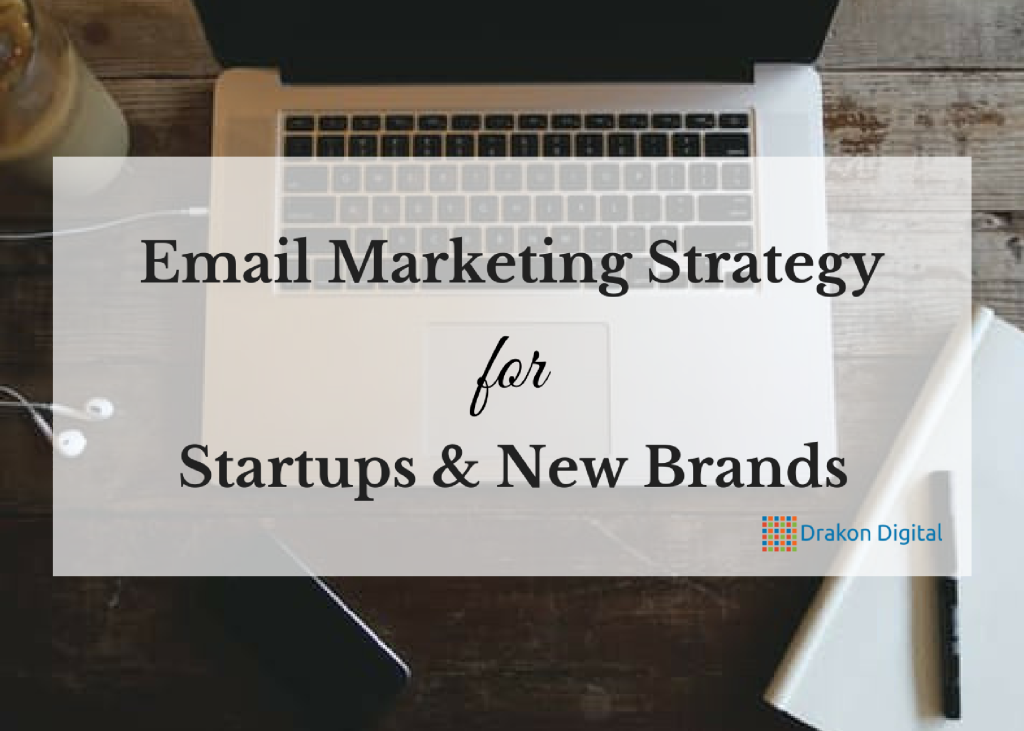Getting someone to your site costs time and money. A strong email marketing strategy can help you retain those visitors. I use MailChimp, however, there are quite a few good options out there.
Don’t get hung up on which service to use. Choose one you’re drawn to and get started.
Plan
The best way to build your email marketing list is to create great content. Creating blog content, white papers & infographics that offer valuable information for your target market will entice readers to join your email list.
Depending upon whether you’re a managing a highly funded startup, a cash-strapped startup or an existing brand you’re going to have different options available to you. Work within your budget and don’t spend all your marketing dollars in one place.
Make a list of topics your audience will find valuable and brainstorm ideas for posts. Keep a list of your best ideas to choose from. When it’s time to write then select a topic and start writing.
After you’ve created your list of ideas to blog about it’s time to start thinking about creating squeeze pages.
Squeeze pages offer valuable content such as in-depth guides in exchange for an email address and often times their valuable business information such as position, budget, etc.
Set Goals
A common mistake many startups and new brands make is trying a marketing method for a short period of time and then giving up when they don’t see the results they want. This is usually the result of setting unrealistic goals – or worse, no goals at all.
Online marketing is like weight loss. If you’re trying to drop 30 pounds you can’t exercise for 2 weeks and give up. You’ll never get to where you need to be.
Depending upon the amount of traffic and your marketing budget, after 1-2 months you should just now have enough data to start making the actual improvements that will lead you to where you need to be for your desired ROI.
Hiring a marketing consultant or agency can lower this time somewhat due to utilizing their past experience optimizing campaigns. Yet, if you don’t have the budget or are starting out in-house be realistic up front about your timeline to success.
If you dedicate the time to continually improve your email marketing efforts then it isn’t rational to expect the ROI from your email marketing campaign in the first 1-3 months will not improve over time.
Any successful email marketing strategy needs to have goals set in place. Based upon your current traffic set SMART goals for how many email subscribers you can get. Work your plan to achieve these goals.
Implement
Create blog posts that provide generalized information on a certain topic – use these to promote your squeeze page content offering step-by-step guides on the same topic.
Set aside some money to promote your posts on Facebook, Twitter or elsewhere. Promoting your content on social media can be a great way to increase your following and build your email list.
If you’re selling physical products consider sending out special offers to people on your email list who haven’t completed a purchase on your site. Arguably, the most difficult step in customer acquisition is moving someone from liking your brand to becoming an actual customer.
Once they’ve purchased from you once they are more likely to purchase from you again.
Create a few email templates and test them against each other. Remember that image heavy emails can take a long time to load on a smartphone or tablet.
If you’re company is a retail brand you may want to have a separate template to use when promoting sales and new seasonal lines. These will usually need to be highly image-based as images of your new products will entice customers to click through to your site.
Spend the time to make your image-based email templates on brand. Otherwise, it is often better to keep emails in text format so they are easily viewable on any device.
Consider keeping one master email list, an email list of non-converted users and an email list of customers who have already converted. This makes it easier to create content for a specific group of people in the purchase cycle.
Another tactic I’ve seen used, and it’s worked on me, is sending out emails or actual postcards with special offers to customers who haven’t purchased from you in a long time. Maybe they’ve been trying other brands or just haven’t thought about purchasing your product in a while.
The important thing is they’ve already been a customer so getting them to purchase from you again is less difficult than convincing someone to try your brand for the first time. This can be especially crucial for startups with scarce funds trying to compete against larger brands with seemingly unlimited funds.
Regardless, whether your company is a startup or an established brand, customer retention should be a key focus of your email marketing campaign.
Optimize
Test… test… test… Try sending emails at different times and see which time gets the best open and click-through rates. Also test which days of the week perform the best. Simple things like these can have a huge impact on your email marketing efforts.
Once you’ve found a winning formula, stick with it. I don’t mean to stop testing. However, once you see diminishing returns from testing consider testing less frequently. And when you do, test big changes. At this point you shouldn’t expect to see large moves in click-through-rates by making small changes.
Plan. Set Goals. Implement. Optimize. If you follow these four steps your email marketing strategy will be a success.
